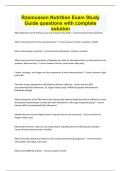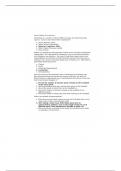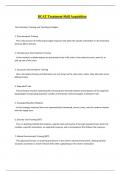Passive voice (10)
The passive voice is used when focus is on the action. The passive is used when its not known or not
important who or what does the action. When changing the active voice to the passive voice, the object
becomes the subject. A form of to be and the past participle is added.
Active voice Passive voice
Present simple I close the door The door is closed (by me)
Present continuous I am reading the newspaper The newspaper is being read (by
me)
Past simple The thieves robbed the bank The bank was robbed (by the
thieves)
Past continuous The radio was broadcasting the The music was being
music broadcasted (by the radio)
Present perfect The reporter has written the The article has been written (by
article the reporter)
Chapter 6
Summary of the tenses (11a)
You have learned about the different tenses in the English language. Here you will find a summary of the
tenses.
Present simple: for habits, routines and facts in the Past simple: for routines and facts in the past.
present. We walked on the beach yesterday.
I walk to school every morning.
Present continuous: ongoing actions in the present. Past continuous: longer activities in the past that
She is not here. She is walking het paper around at have eventually stopped.
the moment. My brother was walking home when it started to
rain.
Present perfect: started in the past. Result is still Future tenses: will, going to, present simple and
noticeable right now. present continuous.
I have walked all the way home. I’m tired now. I will walk through New York one day.
Used to (11b)
Used to is used when something was true or was happening in the past. After used to, the whole verb is
used.
The presenter used to work at a He used to have a dating app on We used to watch the news
children’s programme. his phone. every evening.
Pitfalls (12)
Pitfalls are words that are often used wrongly in writing of speaking. Sometimes they sound the same
(homophones)
possessive vs. contractions
The possessive is used to indicate that something belongs to a person or thing.
Contractions are a pronoun and a verb contracted to one word.
possessive contractions
Your website is offline. You’re (You are) very good at making videos.
Its leaves were very soft. It’s (It is) an honour to meet you.
Whose party are we going to again. Who’s (Who is) that girl over there?
Their dresses were very colourful. They’re (They are) buying groceries today.
Tip: There is pronounced exactly as their and they’re, but means something different: it refers to a place.
Words thar are pronounced the same but duffer in meaning are called homophones.








